History of Devizes and its villages
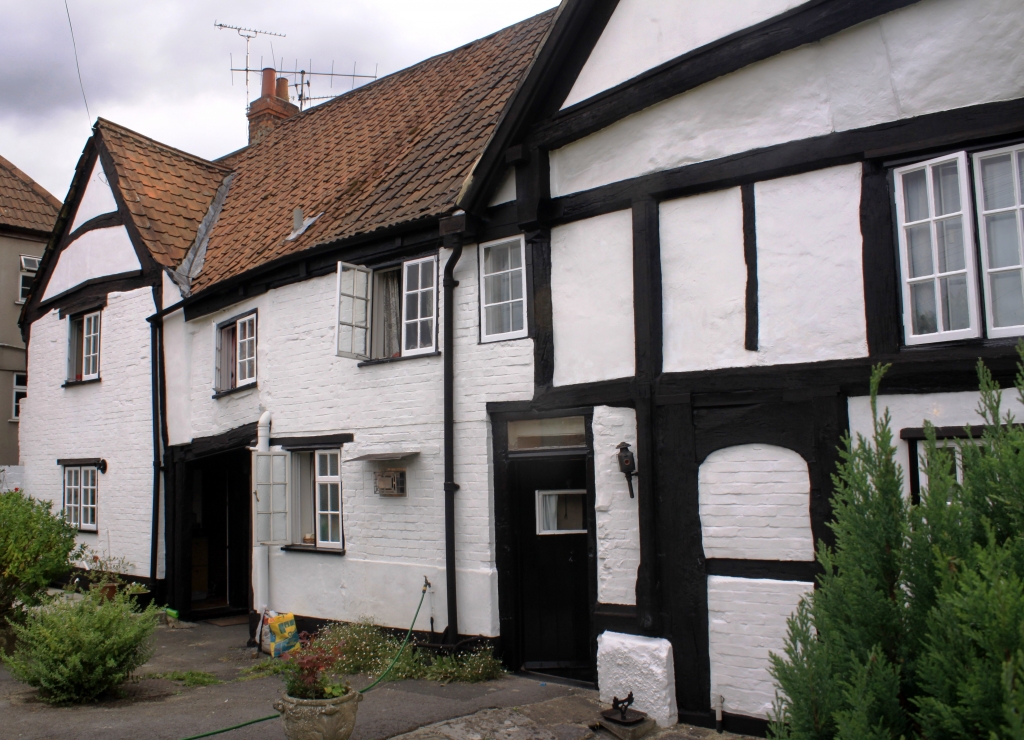
Above: The Great Porch House wass built around 1450 AD for a rich Wool Merchant. It is the oldest surviving timber framed house in Devizes and is grade 2 listed. It is located on the St. Mary´s Church end of Monday Market Street
Devizes is rich in Historic buildings and many have survived urban development in the 19th and 20th centuries.
The Mesolithic, Neolithic, Bronze age, Iron age, the Romano - British periods 43 AD to 410 AD and the Saxon periods are described on the prehistory and archaeology page.
Devizes is not mentioned in the Norman Domesday book of 1086 and there may have been no major settlement at that time. The Castle was built as a strategic centre of power to support the Norman invasion on the boundaries of three manors - Rowde, Bishops Cannings and Potterne in the early 12th century. It became known by its Latin name Castrum ad divisas - the Castle at the boundaries, which evolved to an anglicised the Vyses and finally Devizes.
Devizes grew up around the Norman Castle in the early 12th century when St. John's and St. Mary's Churches were built too. The castle ceased to be of any military importance during the 14th century when the Norman Conquest was secure. It gradually fell into disrepair. The modern Devizes Castle, below, is an 1840 new building on the site.
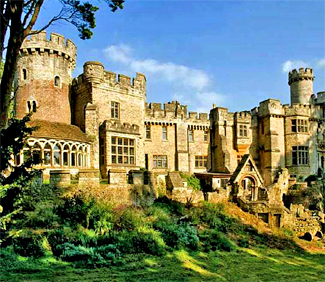
The earliest record for a market in the town dates to 1228; this probably lay near St Mary's Church in the old town. Despite the movement of the economic focus to the New Port, now the current market place, the earlier market was officially revived as a second market in 1567.
The earliest domestic buildings recorded are within the Maryport Street Area. Great Porch House is in Monday Market Street, it is a 15th century good-quality timber framed hall and cross-wing house. Also of this century are; 39 and 39A New Park Street, 46 to 49 Northgate Street, 4 St John's Court, The Lamb Inn, and 25 and 26 St John's Street.
Below: the historic St. John's Alley leading to the Norman St. John's Church .
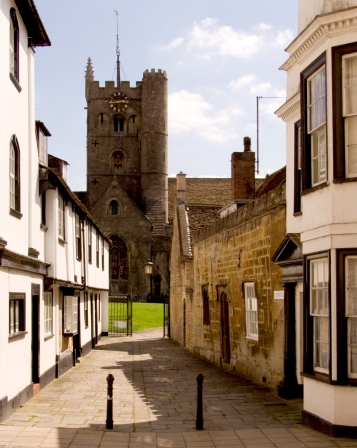
A Map of Devizes shows how housing and industry developed, around the Castle from the 12th century to the 20th century, is available at the Wiltshire Archaeology Service website.
In the new Market Place (New Port) there was major restructuring in the late 16th and early17th centuries. The 16th century butchers, shambles was rebuilt in ca 1600 but the medieval shambles may have been where the market cross now stands. In 1575, the yarn cross was replaced by a Yarn Hall; this became the Wool Hall in 1615 and stood on the site of the present Town Hall. By 1630 the cloth trade was in decline, and local trade was turning to felt, serge and silk manufacture. Many buildings have survived in Devizes, some appear more modern than they really are because they lay hidden behind newer 18th and 19th century fronts. There are over 500 listed buildings in Devizes; details of the history and people who lived in them appear on the Historic buildings and Houses web pages.
The ruined Devizes Castle was a Royalist fortress during the early Civil War and provided a base for Lord Hopton's force during the Battle of Roundway Down in1643. This battle was the most important Royalist victory of the first Civil War.

Above: This cat snoozes away in Morris Lane but during the Civil War there was hand to hand fighting in Morris Lane, and the old St John´s vicarge was destroyed.
The medieval market town developed into an elegant Georgian centre with County town aspirations. Its wealth up to the end of the 18th century was based on the woollen cottage industrial trades. The major building phase was during the latter half of the 18th Century and it was almost complete by 1870.
The most significant Industrial building which survives in the town is John Anstie's Mill on the corner of Snuff Street and New Park Street built in 1785. Anstie changed the woolen industry around Devizes from a cottage industry to factory production with over 300 looms. His fine cloth was in great demand and at one time many of the crown heads of Europe wore Devizes cassimere.
The 19th century brought the Kennet and Avon Canal, a railway, Army barracks, an Assizes Court, a County Prison, the first County police force in England, a County Mental Asylum, a Work House and a growing population.
The Kennet and Avon canal was started in 1790, but it was not until 1810 that the canal was complete. The Caen Hill flight of locks had delayed the completion. The Canal made a most significant alteration of the industrial age in Devizes. It had an impact on both the road network and the development of a small industrial area of the town. The Canal was built across the northern side of the town, just outside the historic core. A wharf was built to the north of New Park Street, which attracted some industrial activity to this sector of the town.
The railway came to Devizes in two phases. A branch line to the town was opened in 1857, which approached from the west. A Station was built on a low lying site north-west of the castle on what is now Station Road. This line was extended to the east in 1862 to create a link to London. This extension involved the digging of a tunnel under the castle and a cutting to its south-east through a small part of the outer bailey and towns defensive circuit. The main reason for the alignment of the railway was the difficult gradient on Caen Hill that would not allow it to pass on the northern side of the town.
A workhouse was built in 1836 on a site east of the historic core of the town. During the 20th century this building was converted into a small hospital before being demolished in 1992. The North Wiltshire Foundry was a large foundry site and engineering works, demolished to make way for new supermarket, now Morrison's. A gasworks was built on a site adjacent to the wharf in 1827 and rapidly expanded across the line of the towns's defences. Although closed in 1955 the gas holders survived on the site into the 1990's.
The Army has had a major presence in Devizes throughout the years from the Wiltshire Militia in the 18th century and in 1878 le Marchant Barracks was built and this became the depot of the newly formed Wiltshire Regiment until 1959.
Devizes has a history of dissenting Protestantism; this story is told in the Churches section. The Wesley brothers were given a hard time in the 18th Century in Devizes as religious intolerance continued after the Civil War.
But during the early 19th century Churches like the Congregational Church on Northgate Street drew congregations of over 600 people. many of the leading townsmen were Protestants.
Devizes has a population of about 15,000 with the facilities, buildings and services of a much larger town. It is set in a very attractive agricultural and Down land environment which makes it a wonderful place to live and visit. It acts as a centre for exploring the villages, the downs, Salisbury Plain and other green areas, Lacock and the inspirational Avebury and Stonehenge pre-historic monuments. The detailed story of Devizes is told in the web pages and links on this website. These will develop over time to cover the railway, the Army in Devizes, the Market and more coverage of our historic houses and buildings. Some pages on archaeology are already present but more detailed accounts will be forthcoming.
Below an aerial photo, by Neil Maw, of part of Roundway Down.
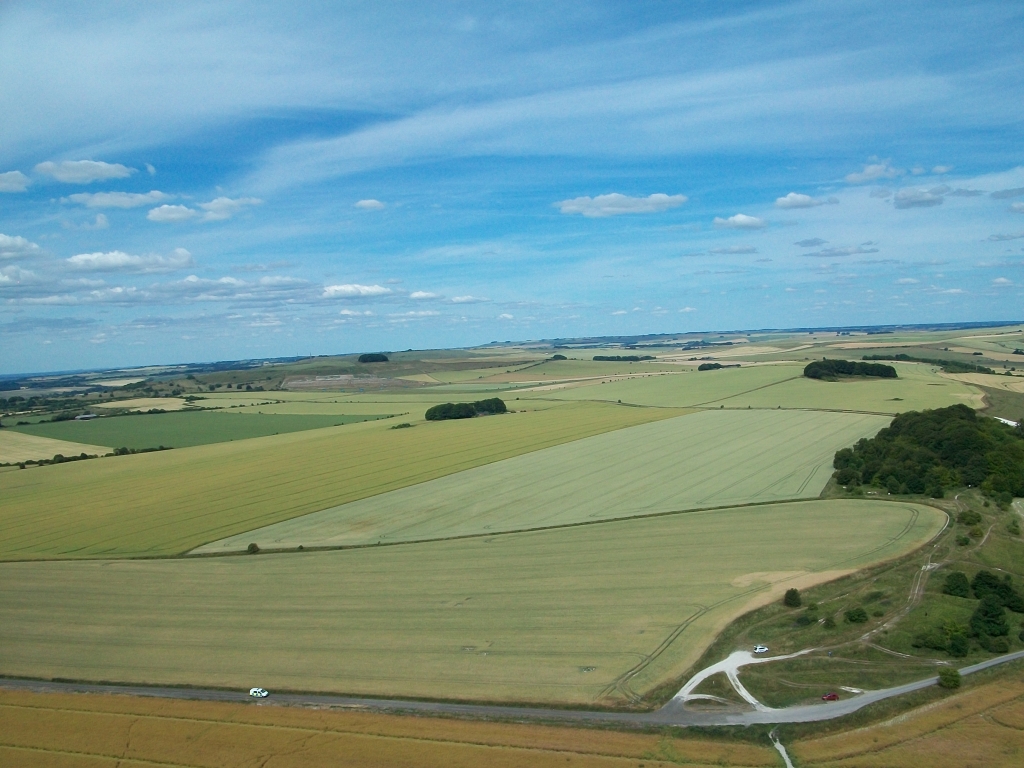
Above: The Battle of Roundway Down in 1643 was fought here. Leipzig Plantation is on the right and Morgan's Hill is on the skyline near the clump of trees.
Below:Devizes Railway Station which was closed in 1965
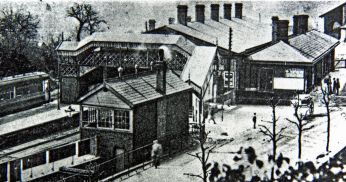
|
|
History Links
These Devizes Heritage links are arranged alphabetically down the right hand side of this page. The biggest sections are on Historic Buildings and Schools.
Online History Links to other History on line books about Devizes,Chippenham, Marlborough and this part of Wiltshire.
Devizes Heritage History pages
These are listed alphabetically
John Anstie (1743 -1830) a biography of a woolen manufacturer.
Archaeology and prehistory around Devizes
Battle of Roundway Down July 1643 - the most significant Royalist victory of the English civil war; it followed on from the Siege of Devizes from 10 July to 13 July 1643.
The Bear Hotel Devizes main Hotel since 1559.
Brewers and brewing in Devizes since the 16th century.
Brownston House a grade 1 building with an interesting history.
Buildings and listed houses in Devizes
Castle in Devizes Founded in 1080 demolished by 1680 and rebuilt in 1830
Chivers- W.E. Chivers and sons., a major engineering and building company for 101 years - based in Devizes
Churches - all Churches in Devizes are described with an individual history and a photo.
Civil War photogallery showing re-enactments of battles ands skirmishes withweapons, soldiers, camp followers at Aldbourne, Basing House, Chippenham, Cheriton and Wardour Castle.
Civil War - Siege of Marlborough December 1642. Its looting and firing led to the surrender of Devizes to the King in march 1642 with out a shot being fired.
Civil War - Lord Clarendon's 17th century account of the 1643 Royalist build up in Somerset, the battle of Lansdown, siege of Devizes, battle of Roundway and the taking of Bristol,
Cloth industry in Devizes - the wool, cloth and textile industry in this area.
Conference on Battle of Roundway Down in Devizes April 30th 2011
Corn Exchange in our Market Square
Devizes a community History supplied by Local Studies group at the Wiltshire and Swindon History Centre in Chippenham
Devizes History Military and Municipal by James Waylen 1859 this is a fantastic resource
German POW Camp - up to 7500 prisoners of war were in Devizes in WW2.
Heathcote House a rectory and manse, Eyles property and home to the Private Devizes Grammar School 45 years.
Historic Houses and Buildings Devizes has 500 listed historic buildings.This is a major section these buildings and providing detailed reports on some important Houses and the Castle.
Inns of Devizes from 1500, including some details of landlords and name changes
Kennet and Avon canal its History
Lawrence, Sir Thomas esteemed portrait painter lived at the Bear Inn as a child prodigy from 1773. Some family details from Waylen's 1859 History of Devizes
Le Marchant Barracks the depot of the Wiltshire Regiment from 1878 to 1959.
Marden Henge a "super henge" just 6 miles from Devizes 2600 BC
MPs for Devizes from 1660
Old Bridewell was on Bridewell Street was an 18th century prison and then the Headquarters of Wiltshire Constabulary (Police) from the 1830s.
Old Photos of Devizes. A growing resource of photos of our streets , houses, shops, industry and some old aerial photos.
Oliver's Castle
History and Archaeology of this beautiful Iron Age fort and Civil War camp.
Prehistory & Archaeology around Devizes
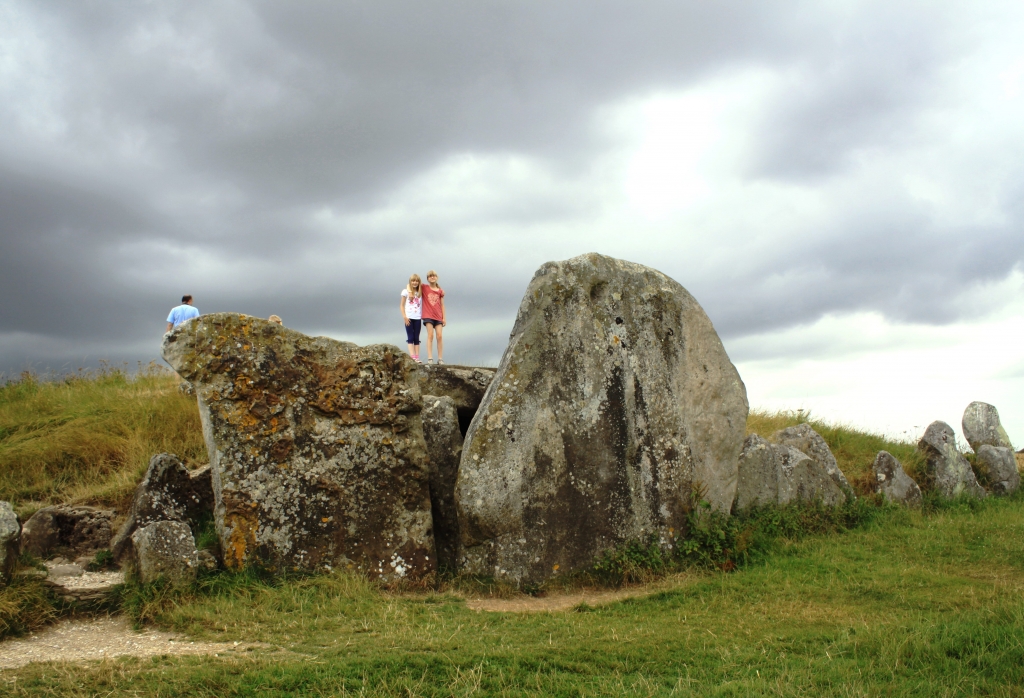
Above: West Kennet Long Barrow near Avebury. Built around 3650BC it was in use as a cemetery for about 1000 years and 50 skeletons were found. Their ancestors built Silbury Hill.
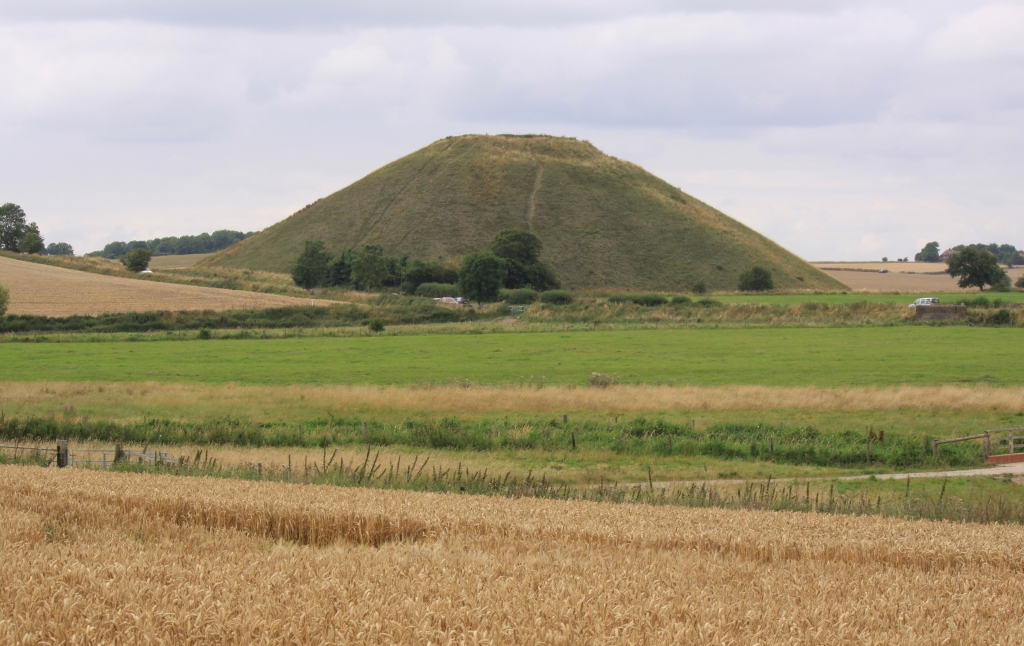
Above: Silbury Hill is the largest man-made mound in Europe. It compares in height and volume to the contemporary Egyptian pyramids. It was probably completed in around 2400 BC and contains no burial. Its significance is linked to a place of "worship" for the permanent springs and river nearby. Water was sparse in chalk country.
Prison Devizes County House of Corrections 1817 to 1920. Photos and details of 7 hangings that took place there.
Railway at Devizes and in Wiltshire.
Roundway Hospital - the old Wilts County Asylum for the insane 1851 to 1995.
St. Johns Church, Long Street - this is a large report on our wonderful Norman Church
Schools This is a large section representing some research by Devizes Heritage. Private and Council schools from the 18th century onwards are covered with lists of pupils in private schools.
Workhouse in Devizes. This includes the census of 1881
What happened in Devizes during the WW2 Second World War. Home Guard, POW, allied soldiers etc.
Trade tokens - two Devizes trade tokens from 1632 and are shown and discussed.
>Wansdyke a 5th century AD 72 km long ditch and bank. Superb focus for walks around Devizes and Pewsey Vale.
Wiltshire Archaeology and Natural History Society Journals online from 1854 to 1908 with an index.
Wilts and Berks Canal - a history
Links to other History sites about Devizes and this part of Wiltshire.
Below:The Caen flight of locks on the Kennet and Avon canal in Devizes.
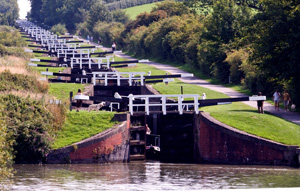
Below: George Sloper's House and bakery on old Sheep Street. He was the major baker in Devize from about 1760 to 1810. He was Mayor several times too. He kept a diary a which has now been printed.
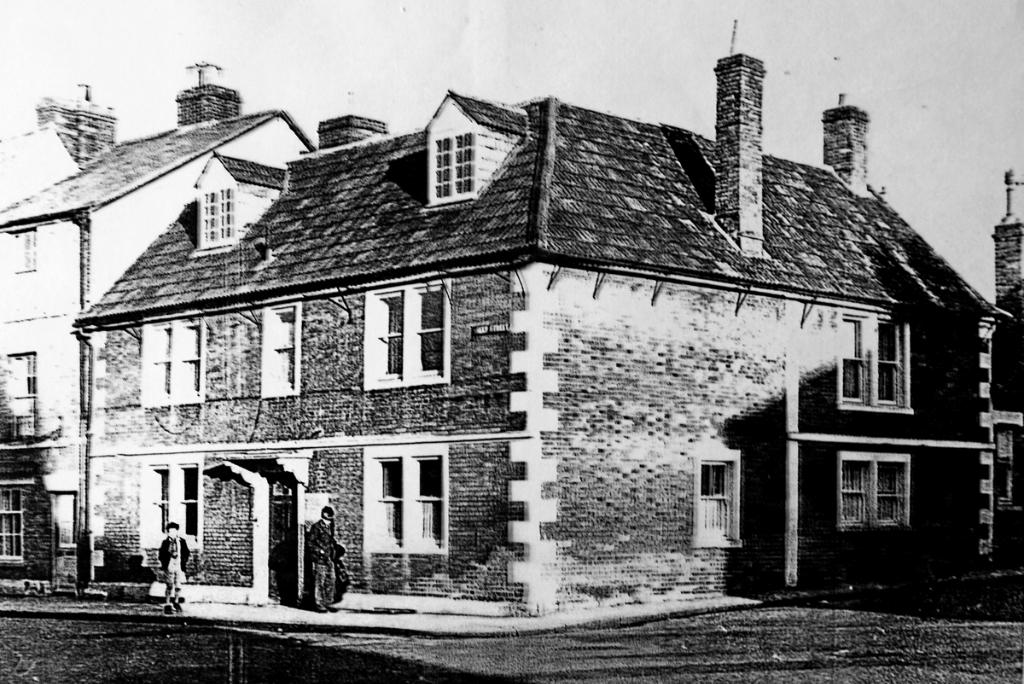
Below: The rear of the Old Congregational Church on Northgate Street before its conversion to apartments and a home.
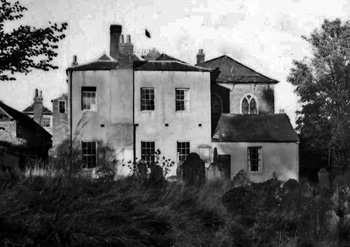
Below boys swimming in the Canal pool in off the Bath Road in the early 1930s.The goal was for water polo which was very popular. Photo Babara Hopkins.
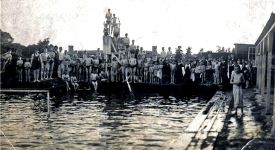
|